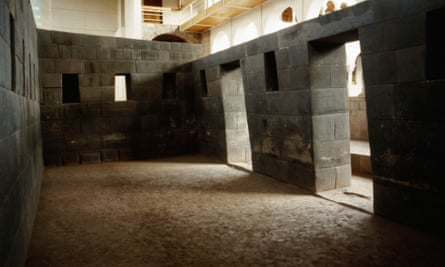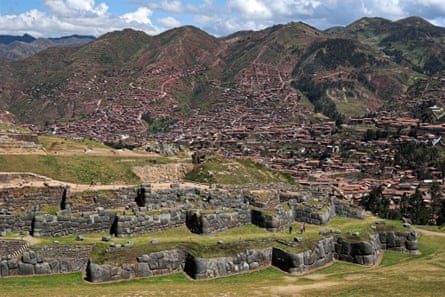The thin air and harsh, rocky slopes of the Peruvian Andes wouldn’t seem to be a likely locale for the capital of an extensive pre-Columbus empire. Any community seeking to thrive under these conditions would need to be equipped with tremendous ambition – and no small amount of political and mechanical ingenuity.
Luckily for the Incas, they had these in abundance, and were able to tame the harsh landscapes to create the largest empire in South America before the arrival of the Europeans, using a blend of religious belief, political will and clever design. Nowhere is this more evident than at Coricancha – the temple of the sun – which they built as the crown jewel of their capital city of Cusco, and the centrepiece of an empire that revolutionised city planning in South America.
When Pachacútec assumed the Incan throne in 1438, he began to reform the city of Cusco by restructuring the street grid, which remains to this day. The city is said to be designed in the shape of a puma, with Coricancha located in the animal’s tail, and considered the holiest site in Incan mythology.

Believed to have been built around 1200 AD, the temple was constructed using the distinctive and intricate masonry style of the Incas. Early Spanish historian Pedro Sarmiento de Gamboa praised this style in his 1572 book History of the Incas: “Those of us who have seen it … are awed upon seeing the evenness and beauty of it.”
The location of Coricancha within the city was very important. Placed at the convergence of the four main highways and connected to the four districts of the empire, the temple cemented the symbolic importance of religion, uniting the divergent cultural practices that were observed in the vast territory controlled by the Incas.
As well as housing more than 4,000 priests, the positioning of the temple in relation to the nearby Andes mountains meant that Coricancha functioned as an enormous calendar. Shadows cast by stones placed on the foothills could be seen from the temple, marking out the solstice and equinoxes observed by the Incan empire.

The temple complex consisted of four main chambers, each dedicated to a different deity of the moon, stars, thunder and rainbows. Much of Coricancha was filled with gold, with one chamber containing a giant sun disc, reflecting sunlight that illuminated the rest of the temple. The disc was aligned so that during the summer solstice it illuminated a sacred space where only the emperor himself was allowed to sit.
During Pachacútec’s reign he made massive conquests, and the Incan empire went on to control an area that, under his successor, would extend from modern-day Colombia to Santiago, Chile. The effective organisation of Cusco no doubt played a large part in this success.
But the glory of the empire was short lived. Disputes over who was to become the next Inca, as well as a devastating smallpox epidemic brought on by European explorers in the 1530s threw the empire into chaos. When Spanish conquistador Francisco Pizarro arrived he took advantage of the mayhem, and captured the emperor Atahualpa, despite being vastly outnumbered. To pay the ransom demanded by the Spanish for his the release, much of the gold from Coricancha was stripped, and despite the payment, Atahualpa was killed.
After taking Cusco, the Spanish demolished most of Coricancha, melting down its gold plating and sculptures to be sent back to Spain. They then built a cathedral on the site, though they maintained its stone foundations. But ultimately, it was the Incans who had the last laugh, at least at Coricancha. Centuries later, an earthquake completely destroyed the Spanish-made cathedral but left the foundations of the temple intact.
Today, Coricancha may finally be getting the recognition it deserves. Though modern Cusco has expanded enough so that the original puma design is nearly impossible to make out, Coricancha still has an important place in the city and it pulls in many visitors.
The Spanish cathedral has been rebuilt on top of the Incan masonry and while visitors are prohibited from climbing on the original temple walls, they have the freedom to roam on the grounds of the temple site. Today, the golden sun disk has been replaced by sunbathers.

Comments (…)
Sign in or create your Guardian account to join the discussion